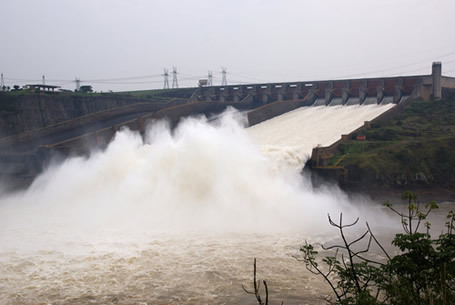bone tissue is a kind of connective tissue which stands out for being the main component of the bones of our skeleton. This tissue is, therefore, related to the support of the body, in addition to the protection of organs and locomotion. Next, we will explore the bone tissue, knowing the cells that are part of it and also its main types.
Read too:Human skeleton
Bone Tissue Characteristics
Bone tissue is a type of special connective tissue, having as one of its most striking features the presence of calcified extracellular material (bone matrix). This matrix is rigid due to calcification but it is also elastic due to the presence of collagen fibers.

In addition to this matrix, the bone tissue presents cells specialized: osteocytes, osteoblasts and osteoclasts. Osteocytes are cells located within the lacunae of the matrix; osteoblasts are cells related to the synthesis of the organic part of the matrix and are located in its periphery; and osteoclasts are mobile cells, therefore occurring in various parts of tissue.
bone matrix
The bone matrix is very resistant and presents a organic portion is inorganic portion. The inorganic portion represents approximately 50% of the matrix weight, being formed, in greater quantity, by phosphate and calcium. The organic part, in turn, consists mainly of collagen, especially type I collagen.
Bone tissue cells
The bone tissue presents three types of specialized cells: osteocytes, osteoblasts and osteoclasts.

Osteoblasts: they are cuboidal or slightly elongated cells related to the synthesis of the organic portion of the bone matrix. In addition, they are responsible for producing osteonectin and osteocalcin, two proteins not collagens. Osteonectin works by facilitating calcium deposition, while osteocalcin is involved with the control of the bone mineralization process, being responsible for stimulating the activity of osteoblasts. When the osteoblast is trapped in the gap after bone matrix synthesis, it is called an osteocyte.
Osteocytes: they are flat cells with several cytoplasmic extensions and that stand out for being the most abundant cell type in this tissue. These cells are within the bone matrix, more precisely within the lacunae, with only one cell per lacuna being present. The canaliculi depart from these gaps, through which the osteocytes can establish contact with others through their extensions, making the transfer of some molecules possible. Furthermore, these canaliculi ensure exchange of substances between osteocytes and blood capillaries. They are, therefore, essential for the nutrition of osteocytes, since the calcified matrix prevents the diffusion of substances. Osteocytes are related to the maintenance of bone matrix, although they are not responsible for rapid matrix production.
Osteoclasts: they stand out for being large, having several cores, being very branched and mobile. These cells are associated with bone resorption. This function is possible due to the release, by these cells, of enzymes that guarantee the breakdown of mineral salts and the protein portion.
Read too: Human body: parts, functions, tissues, cells, organs and systems
Mind Map: Bone Tissue

*To download the mind map in PDF, Click here!
Types of bone tissue
Bone tissue can be classified into two types when we analyze microscopic aspects: primary or immature bone tissue and secondary or mature bone tissue.
Primary or immature bone tissue: it is the first to appear in bone formation, being present in the fetus, bone callus and in some bone diseases. It has collagen fibers that are arranged in several directions and has a smaller amount of minerals when compared to secondary bone tissue.
Secondary or mature bone tissue: appears to replace the primary bone tissue and contains collagen fibers organized in lamellae, which are parallel to each other or even forming concentric layers around channels (channels of Havers). The gaps that osteocytes present are usually located between the lamellae. The Havers system (or osteon) is a long cylinder formed by several concentric lamellae, with the Havers canal in the center, through which vessels and nerves pass. Each channel is able to communicate with each other, with the medullary cavity of the bone and with the surface of this structure, through the Volkmann channels, which cross the bony lamellae.
We can also classify bone tissue into two other types when we analyze it macroscopically. In this case, we have compact and spongy bone tissue, which have the same histological structure.
Compact bone tissue: found in the most peripheral region of the bones, it is characterized by being dense and strong, with no visible cavities.
spongy bone tissue: characterized by having a series of intercommunicating spaces, which generate the spongy appearance of this fabric.
By Ma. Vanessa Sardinha dos Santos

